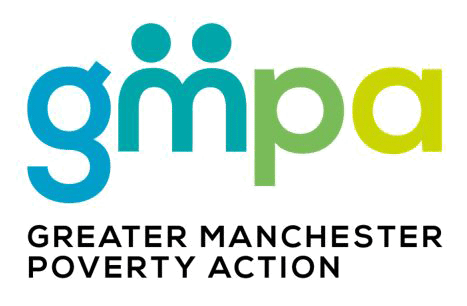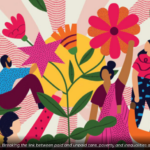By Hollie Griss, Communications and Media Officer at Greater Manchester Poverty Action
At Greater Manchester Poverty Action, we have been leading on North West publicity for the End Child Poverty Coalition’s new figures. Here’s a closer look at the local and regional picture.
The new local child poverty statistics for Greater Manchester are stark. They show that 37% of children and young people in the city region are living in poverty – or the equivalent of a staggering 11 children in a classroom of 30. 
The highest levels are in Manchester where this figure reaches 44.7% of all children and young people, closely followed by Oldham (43.6%) and Bolton (41.6%).
Alarmingly, four of the city region’s local authorities also now feature in the list of the twenty council areas with the highest child poverty rates in the whole of the UK – with Manchester having the third highest child poverty rate in the country.
Across the North West as a whole the number of children living in poverty has seen a worrying increase in the last 7 years, rising 5.4 percentage points since 2014/15. During this time, child poverty only rose by one percentage point across the UK.
What do the figures mean?
While these new figures are shocking, they are sadly not surprising. Child poverty rates have been rising in Greater Manchester for a number of years, and inadequate government support means there is no safety net when something like the pandemic or cost-of-living crisis hits.
It’s deeply concerning that the UK government has no plan or strategy to address poverty. Crisis responses and temporary sticking plasters are very clearly not working, and we really need to see real policy change that protects and supports our poorest households.
What can we do locally?
While many of the main drivers to tackle poverty lie with central government, there are ways we can reduce poverty locally.
1) Adoption of the Real Living Wage: the Real Living Wage (RLW) reflects the real cost of living in a way that the statutory minimum set by government doesn’t. Employers paying the RLW plays a vital role in addressing low pay and boosting household income. For organisations looking to become accredited RLW employers, visit our GM Living Wage Campaign page.
2) Local anti-poverty strategies: anti-poverty strategies implement robust responses to poverty. For local authorities looking to take a strategic approach to poverty, take a look at our best practice.
3) Cash-first use of Household Support Fund: the Household Support Fund can be used to give families money rather than in-kind support such as food parcels and energy vouchers, maximising choice, flexibility and dignity for individuals in receipt of support. For local authorities looking to take a cash-first approach to the delivery of the HSF, see our best practice briefing.
For more information on the Greater Manchester statistics, see our GM press release. For more on the figures across the wider North West region, see our North West press release.
You can also hear CEO Graham Whitham talking more about the statistics for the North West in an interview with BBC Radio Lancashire.
For more articles like this straight to your inbox, sign up to our newsletter.






